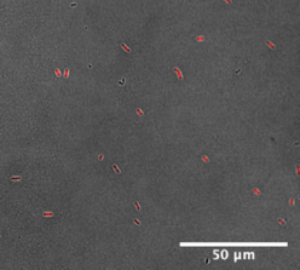Arsenic Speciation and Bioavailability in Wetland Soils
Members of the Reid Lab have performed research on arsenic biogeochemistry in rice paddy soils that spans physical scales from field observations in Vietnam and Arkansas, to molecular-level studies of arsenic interactions with mineral surfaces and microorganisms. Current research is focused on interactions between dissolved organic matter and arsenic, and how these interactions impact arsenic bioavailability and biotransformation by microorganisms, specifically methylation-demethylation reactions. We perform this research by combing techniques including fluorescent arsenic biosensors (pictured below), arsenic speciation analysis via HPLC-ICP-MS, and gene expression analysis.

This research has been funded by the NSF Environmental Chemical Sciences Program and USDA-NIFA
Researchers: Hyun Yoon
Publications
Reid, Matthew C., et al. “Arsenic methylation dynamics in a rice paddy soil anaerobic enrichment culture.” Environmental science & technology 51.18 (2017): 10546-10554.
Maguffin, Scott C., et al. “Influence of manganese abundances on iron and arsenic solubility in rice paddy soils.” Geochimica et Cosmochimica Acta 276 (2020): 50-69.
Yoon, Hyun, et al. “Time-dependent biosensor fluorescence as a measure of bacterial arsenic uptake kinetics and its inhibition by dissolved organic matter.” Applied and Environmental Microbiology 88.16 (2022): e00891-22.
Reid, Matthew C., et al. “Associations between inorganic arsenic in rice and groundwater arsenic in the Mekong Delta.” Chemosphere 265 (2021): 129092.
Abu-Ali, Lena, Hyun Yoon, and Matthew C. Reid. “Effects of organic sulfur and arsenite/dissolved organic matter ratios on arsenite complexation with dissolved organic matter.” Chemosphere 302 (2022): 134770.
Recent Comments